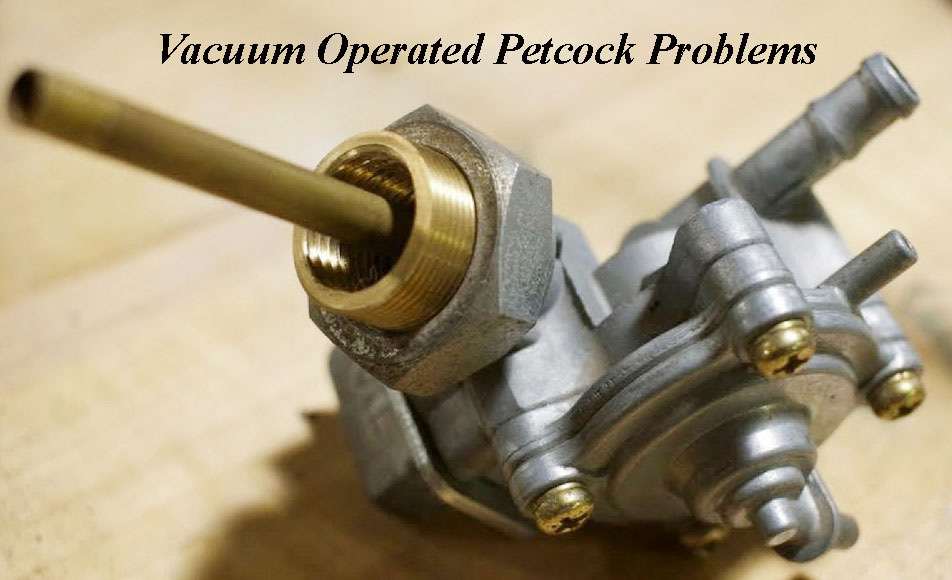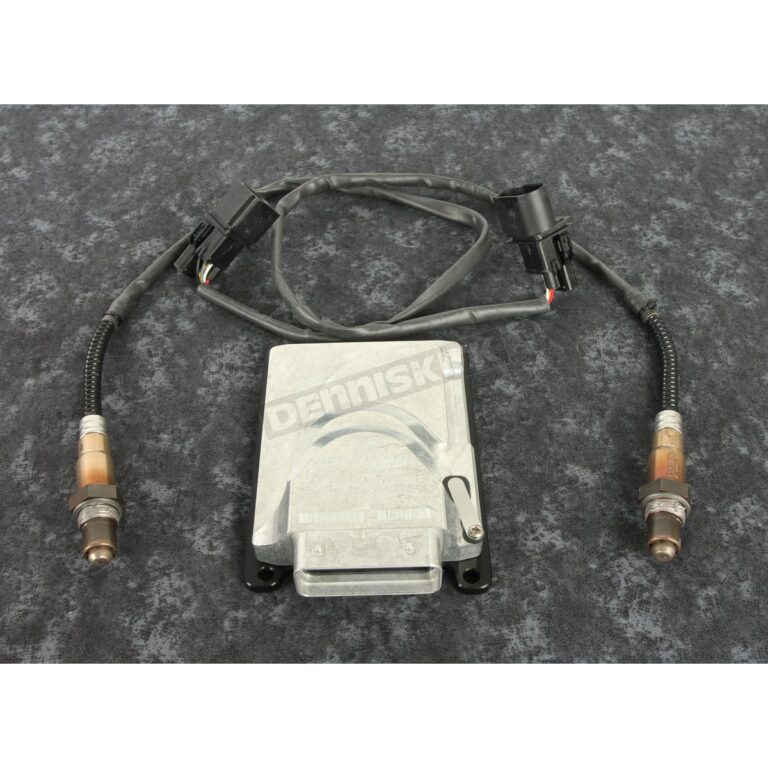Vacuum Operated Petcock Problems and Ways to Solve Them
A petcock is an essential part of an engine’s setup. In a motorcycle engine, it directs fuel from the tank to the carburetor. It usually stops the fuel flow in the off position and provides the fuel flow in the on position. A vacuum operated petcock can regulate the fuel flow without the engine turning over. But the common vacuum operated petcock problems can lead the engine to malfunction.
However, if you’re experiencing issues with your petcock, you need to correct them quickly. Otherwise, you will have trouble with your motorcycle engine, and eventually, the engine may also be damaged. In order to get rid of such a catastrophic situation, we suggest you apply the following tactics to identify and fix those issues:
What are the main vacuum operated petcock problems?
The vacuum-operated petcock problems are a serious matter of concern. But you can troubleshoot the issues without even breaking a sweat. All you need to do is follow some simple steps and let your petcock start working like before. Prior to starting the fixing process, you need to check the water pressure. By the way, let’s explore the truth!

Worn-out gaskets
Motorcycle petcocks encompass gaskets or o-rings. The number of gaskets can be different based on the model of the bike. But the problems with the gaskets are the same. They are susceptible to wearing out over time. Once they get worn out, the overall functionality of the petcock becomes disrupted.
Due to the faulty gaskets, the gasoline tends to dry out the sealing material. Sometimes, it makes the gaskets displace and crumble. As a result, the vacuum diaphragm seals become ineffective and cause leaks in the petcock. And this forces the petcock to be unable to flow the fuel from the tank to the carburetor.
That means when the gaskets get fragile, a wide range of problems arises with the petcock. As this issue is not a piece of cake, you have to think deeply about it. What can you do? To get rid of such a big headache, you have to replace the gaskets, primarily. But if you find the issue persists, you can concentrate on replacing the petcock as well as the engine oil.
Vacuum leaks
One of the most prominent reasons for the petcock to stop working is the vacuum leak. If vacuum leaks occur in the vacuum system used in petcock valves, the overall system becomes susceptible to lower pressure in the oil tank. It also leads to a massive reduction in the oil supply and increases the oil consumption rate.
Moreover, vacuum leaks create air bubbles in the lubrication system and diminish the engine’s efficiency. All these issues cause the engine to eventually fail. So you need to diagnose the leaks to rescue your engine from the increased emissions levels and permanent damage.
You also have to check the hoses connecting to the petcock to detect vacuum leaks. What should you do when vacuum leaks occur? The most appropriate way is to replace the entire vacuum system used in the petcock valves. You also need to replace the hose if you find an air bubble in any of the hoses.
Clogged air filter
If the air filter somehow becomes clogged up, the chance of the petcock going out of order becomes higher. It’s no wonder that most of the time, vacuum petcock problems emerge when dirt and debris get stuck in the filter. As a result, the fuel supply becomes restricted and obstructed.
It also makes the vacuum cleaner hard to work seamlessly and causes malfunctions in the engine over time. In this case, you need to check the air filter initially. Once you find the filter clogged, you have to, by all means, clean it.
If you find the problem persists after the clean-up, you need to replace it without delay. Besides, you also need to examine whether the filter’s seal is functioning properly. You need to contact an expert if you find signs of damage to the seal.
Kinked fuel line
Defects in the fuel line can make the petcock completely inoperative. The flaws can occur in several ways. When the fuel line is installed incorrectly, a problem arises with the petcock. Besides, the petcock stops functioning correctly if the fuel tank is taken off and installed improperly again. These flaws usually cause the fuel line to pinch and make the fuel supply choke out. Consequently, the petcock becomes completely blocked.
If you discover a kinked fuel line in your motorcycle’s engine, you need to install the fuel tank and line properly. You also need to make sure the threads on the tank aren’t damaged. If you find it arduous to set up, you can ask for help from someone who excels at rebuilding the components.
Broken valve stem
In a motorcycle engine, a valve stem is an indispensable component. Why? That’s because it prevents oil from penetrating the combustion chamber from the cylinder head. If the valve stem somehow gets broken, there will be terrible setbacks in the entire operation of the engine. Even if you neglect this issue, it may lead to bigger problems and even permanently damage the engine due to the unnecessary flow of oil.
Hence, if you notice the vacuum valve stem breaking, you need to fix it as soon as possible. In some cases, you can try adjusting the pressure in the system to get the stem to work. But there is a little hope for a workaround. Replacing the broken valve stem with a new one can be the best option for you to avoid further hassle. Always call an experienced technician before doing such a sensitive task to protect your engine.
Blocked tubing
From poor suction to emissions, there might be a vast number of problems with a motorcycle’s vacuum-operated petcock. It’s no wonder that the blocked tubing is the main culprit behind the issues. Similar to air filters, dirt, and debris always block the tubes used in the petcock vacuum system. If you discover clogged tubes, you need to use a tube cleaner to clean them. Only clearing the debris won’t do; you also need to pump the piston in and out several times. This will remove trapped air from the system that may cause issues.
It’s crucial to attach the hose precisely to ensure proper suction at each point. Another important thing you need to do is lubricate the connecting parts of the tubes to prevent residue from accumulating. Always try to apply some oil to all moving parts of the petcock to keep it running smoothly and efficiently.
How to properly maintain a petcock?
The functionality of a petcock mainly defines the efficiency of an engine. A malfunction in a petcock is not unusual. You may come across numerous issues that are common. The loss of the problems can be diminished mostly if you can confront them by taking the right steps. In this section, we will guide you on how to properly maintain a petcock to keep your engine safe and intact.
Keep the fuel tank clean
Nothing can be a better remedy for a faulty petcock than keeping the fuel tank clean. If you regularly clean up the tank, there will be no chance of accumulating dirt, debris, and other contaminants in the vacuum system. As a result, there will be no clogs or blockages in the petcock or tube. Besides, the petcock will never corrode or wear out. And ultimately, the petcock won’t stop working smoothly.
Keep the air intake area clean
Maintaining optimal cleanliness in the air intake area can save you the hassle of replacing a damaged motorcycle petcock. Yes, it’s true that you can enhance the durability of the engine’s petcock by keeping the air intake area clean all along. Never make a blunder by not clearing the dirt inside the air filter to eliminate the chance of a petcock getting faulty.
Check for leaks
Having leaks in the gas tank is a common incident. You must regularly inspect the leaks and follow an instant workaround to prevent the engine’s petcock from going out of order. Also, you need to keep the lever tight to prevent fuel from leaking out of the petcock.
Inspect the gasket
The gasket is prone to getting damaged in no time. It hampers not only the operation of the petcock but also that of the oil tank. Unless you notice and fix the flaws in the gasket, the fuel will run out soon and the vacuum-operated petcock will not be activated. The corroded gasket will also cause many more issues with the engine.
Keep the spring tight
If you’re committed to keeping your petcock well-maintained, you need to keep the spring tight. That’s because once the spring is loosened, it can force the float valve to stop functioning appropriately. Besides, you need to make sure the valve stem is properly seated on the pump impeller to avoid any drawbacks of the petcock operation.
Check the sealant
If you don’t want to tolerate the disturbance of the petcock, you have to regularly check the sealant around it. You can be sure there are many problems with the vacuum cleaner if you find the sealant wet. If you discover cracks in the sealant, you can replace it with a new one to ensure the petcock works superbly like before.
Lubricate all moving parts
The most effective way to maintain your petcock is to lubricate all moving parts. Every time you use the petcock, you can apply some oil to the parts that keep the petcock running efficiently. If you can ensure all the moving parts are lubricated, you can certainly find your petcock working smoothly without any interruptions.
Frequently Asked Questions
We’ve discussed deeply the vacuum-operated problems. Now we want to respond to some frequently asked questions that may help you solidify your understanding of the petcock. You can pay heed to this section to acquire more knowledge and expertise.
What are the parts of a petcock?
A petcock comprises several parts, including the body, lever, washer, gasket, and spring. All the parts are important to control the flow of fuel and keep your motorcycle running smoothly. There are also some cap screws that help to keep the petcock attached to the gas tank.
How often should you clean the motorcycle petcock?
A motorcycle’s petcock gets dusty often. To avoid malfunctioning, you can clean the petcock at least once a week if you ride the bike constantly. But if you ride the bike only a few times a year, then a clean-up session once a year will be enough.
Can a bad petcock cause engine damage?
Of course, a faulty petcock is detrimental to the engine, as it causes a myriad of serious problems with the overall functionalities of the engine. Even so, it can cause engine seizures over time due to the inconsistent fuel supply.
Can I ride a motorcycle without a petcock?
It’s not ideal to ride a bike without having an active petcock installed. That’s because you couldn’t control the flow of fuel into the engine without a petcock. Besides, it will cause the bike to run too fast or too slowly. Ultimately, it will seem dangerous for both you and your motorcycle.
How do I fix a leaking petcock?
If you have a leaking petcock, then you can start fixing it by disconnecting the fuel line and pulling the petcock out of the gas tank. You can clean any dirt from the gasket on the petcock and apply some sealant to it. Then you can install the petcock back in the gas tank to get it working again.
Final Words
A petcock is one of the crucial components of a motorcycle engine. It generally controls the flow of fuel. But unfortunately, a petcock gets struck by several issues and wears faster than other components. The symptoms of faulty petcocks include a flooded engine, poor performance, leaks, and so on. The most common vacuum-operated petcock problems are covered above with the mechanisms of troubleshooting. We also explained the ways to maintain a petcock to rescue your engine from damage.
If you can properly grasp the tactics to identify the issues with the petcock, we hope you will no longer suffer. Adhering to the steps mentioned above can protect the petcock and offer you risk-free and concern-free riding assurance. Now it’s your turn to utilize the acquired knowledge practically to solve the problems that may put you in trouble on the driveway.




